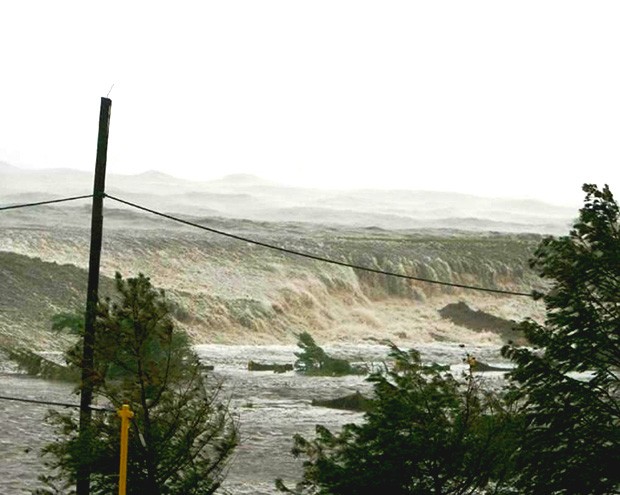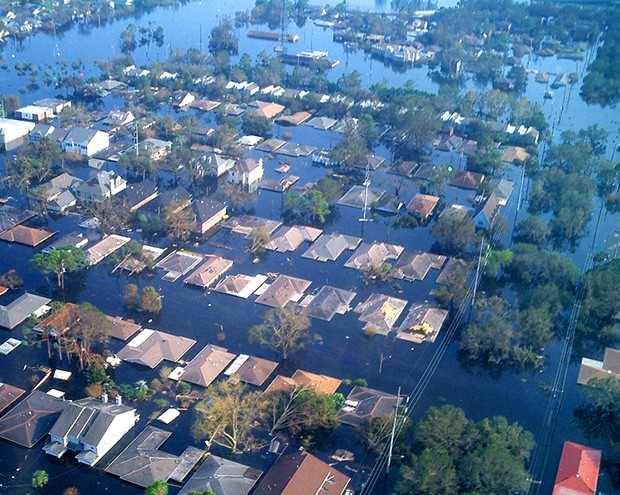Hurricane Katrina’s disappointing legacy

Rosemary Reilly, an associate professor and graduate program director in Applied Human Sciences, studies post-traumatic growth (PTG) and the impact of trauma on communities.
In August 2006, I had the opportunity to visit New Orleans to attend the American Psychological Association convention.
It was one year after the levees broke, when Hurricane Katrina made landfall and changed everything. One year after the photos of people on rooftops painting messages of desperation, pleading for rescue.
One year after the news reports of thousands stranded in the Louisiana Superdome without food, water, or adequate sanitation; of people abandoned in hospitals or care facilities; and of prisoners left locked in their cells as the waters rose.
It was one year after the mostly white police officers from Gretna, Louisiana, used gunfire to stop the mostly African-American evacuees who were only trying to walk to safety.
It was my first visit to NOLA and what I saw one year after Katrina broke my heart: block after block of boarded-up homes; essential health and social services and public transportation suspended; and hundreds of pre-fab transitional shelters, the notorious Federal Emergency Management Agency (FEMA) trailer parks.
As I walked around the French Quarter, every tourist shop had a vast collection of T-shirts that documented the frustration and anger of NOLA citizens at being forsaken by government officials. One I remember was:
FEMA (Fix Everything My Ass)
Ten years later, some things have changed, while others remain the same.
There are still many boarded-up homes; young white professionals have gentrified formerly working class black neighborhoods. People of low income faced tougher challenges in returning, with some still exiled in Houston or West Virginia.
Katrina swept away a school system that was one of the worst in the US, replacing it with a controversial charter system. And though advances in forecasting now allow for earlier, more accurate storm predictions, the city is still economically and racially stratified, with high rates of poverty.
The emotional impact of the storm that caused more than 1,800 deaths, 500,000 people displaced and more than a billion dollars in damage still reverberates.
But it didn't have to be that way.

'The worst can also bring out the best in us'
Mass traumas, man-made and natural, do not need to leave just a legacy of devastation, pain, grief, and loss.
Disasters can also be opportunities for individuals and communities to cultivate their ability to be resilient; to adapt and even thrive in new conditions; and to not just bounce back, but “bounce forward” into a more desirable future. Depending upon the response, a trauma can increase a community's sense of connectedness and cohesion.
This phenomenon is called post-traumatic growth (PTG), the positive psychological changes experienced as a result of coping with adversity and rising to face associated other challenges.
PTG, at individual and community levels, is supported by several conditions. Once the concerns for preserving life and restoring essential services are met, relationships with neighbors become a primary resource for recovery.
A community's capacity to respond to disaster is a function of the ability of neighbors to work together to deal with additional threats; to work collaboratively using their collective expertise to deal with emergent problems; and to provide social support, especially to their more vulnerable fellow citizens.
These relationships allow communities to move from the perception of powerlessness towards a resurrection of pride, deep rootedness and attachment.
National, provincial and local community leaders are vital in nurturing these restorative relationships. Along with allocating the appropriate resources, recognized authority figures, whose influence is enhanced during times of communal vulnerability and need, can readily (and appropriately) guide members in ways of coping, even when the immediate effects of the disaster are still occurring
Emergent leaders, regular folks who rise to the occasion, can pull people together when the bonds of community are broken. Leaders have the power to support the creation of communal rituals to promote healing and recovery.
Katrina showed us how not to be when faced with disaster. But the worst can also bring out the best in us.
Read an excerpt from Concordia professor Stephanie Bolster's "Long Exposure: The Address," a poem inspired by Hurricane Katrina.
For more on the disaster's impact, check out the New York Times multimedia story, "10 Years After Katrina."